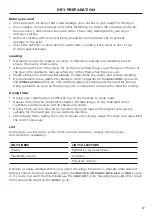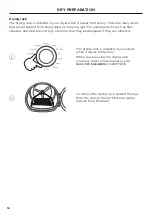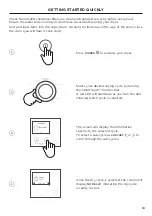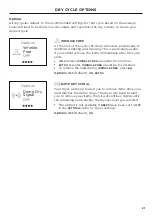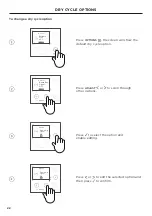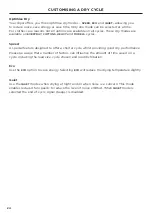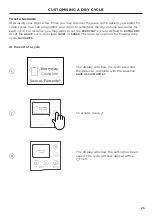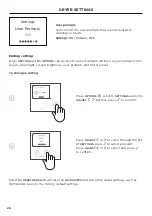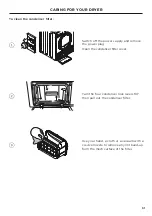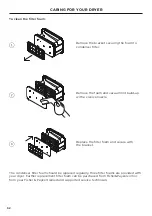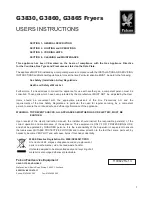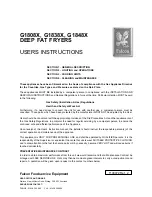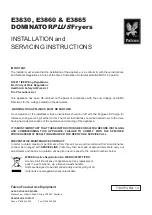
17
Before you load
z
Check pockets for items that could damage your clothes or get caught in the dryer.
z
Close zippers, hooks and eyes, and other fastenings (ie fasten the openings of duvet/
doona covers), and remove loose bra wires. These may damage both your dryer
and your clothes.
z
Items of clothing with screen-printing should be turned inside out to prevent
damage to the print.
z
Check the lint filter is clean and the water tank is empty (if the dryer is not set up
to drain automatically).
Loading
z
Garments need to be loaded correctly to minimise creasing and wrinkling, and to
ensure the load is dried evenly.
z
Allow enough room in the dryer for clothes to tumble freely. Load the dryer in terms of
the space the garments take up when dry, rather than when they are wet.
z
Shake clothes out and load individually to help items dry evenly and reduce tangling.
z
Dry permanent press garments (business shirts) together on the
EASY IRON
cycle with
the
WRINKLE FREE
option on. This will help reduce wrinkling and the need for ironing.
Hang garments as soon as the drying cycle is complete to reduce the need for ironing.
Drying times
z
Drying very small loads is inefficient. Try to dry medium to large loads.
z
Heavier items (towels, flannelette sheets) will take longer to dry than light items
(synthetics and polyester cotton sheets and shirts).
z
Drying times can be reduced by spinning the wash load at the highest spin speed
suitable for the load type in your washing machine.
z
Check bulky items during the cycle to ensure even drying, pause the dryer and reposition
the item if necessary.
Lint
Some items are lint givers, while others are lint collectors. Always dry lint givers
and collectors separately.
LINT GIVERS
LINT COLLECTORS
Towels
Synthetics, eg polar fleece
Flannelette sheets
Corduroy
Polyester cottons
Delicate or easily damaged items (eg nylon stockings, fine fabrics, delicate embroidered
fabrics) should be dried separately, using the
DELICATE
,
ULTRA DELICATE, SILK
or
WOOL
cycle,
or if you do not want them tumbled use the
RACK DRY
cycle. Sleeping bags and other down
items should be dried on the
BULKY
cycle.
DRY PREPARATION















